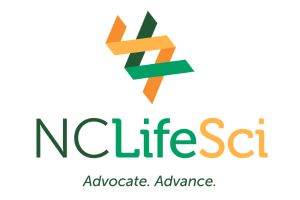AMR is a silent killer that threatens our health in North Carolina and beyond
The small red bump on my son's hand looked at first like a bug bite. But when the hand swelled to the point of immobility and we took him to the doctor, the diagnosis was MRSA, an infection from a type of staph bacteria resistant to the family of antibiotics usually prescribed as treatments.
Thankfully, my son's recovery was quick and uneventful. But his condition could have become life-threatening without the availability of antibiotics still effective against his case of Staphylococcus aureus.
Welcome to the scary world of antimicrobial resistance — pathogens that have evolved to survive many and, in some cases, all of the drugs we have at our disposal to kill them before they kill us.
The paradox is that the more we use antimicrobial medicines to combat bacterial and fungal threats, the more resistant these bugs become over time.
The scope of this problem is vast, and it’s getting worse. More people died from AMR-related infections across the globe in 2019 than from HIV/AIDS or malaria. That year, there were nearly 173,000 AMR-associated deaths in the United States and almost 5 million worldwide.
Superbug infections were the third leading cause of death from disease in the United States in 2019, trailing only heart disease and cancer. Current projections indicate AMR deaths will outpace cancer deaths by 2050.
Superbugs are everywhere, North Carolina included. Several years ago, one of the most urgent superbug threats, carbapenem-resistant enterobacterales — multidrug-resistant bacteria which few current treatments can treat — killed two North Carolina residents and infected 16 others. MRSA infections, like the kind my son contracted, increased significantly here between 2020 and 2021.
Clinicians work tirelessly with the drugs they have available in search of effective treatments for superbugs. They often turn to a "cocktail" of different antimicrobials that work more effectively in combination than individually. While this approach can be successful, there is no substitute for the continuous development of much-needed new antimicrobials that can attack pathogens in different ways.
Scientists have the knowledge they need to create such drugs. The problem lies elsewhere: the business model for the antibiotic marketplace doesn't work, due to the fundamentally unique way that antimicrobial medicines are used.
New drugs typically count on sales volume to generate a return on investment, and developing a new drug costs from $1 billion to $2 billion. But new antimicrobials must be used sparingly. We need to kill pathogens, but we don’t want them developing resistance. We must therefore use new antimicrobials only when absolutely necessary — the right drug for the right bug at the right time.
Any use of a new antibiotic will hasten the evolution of bugs resistant to it. We need a different way for developers to bring these products to patients, using a business model that supports innovation but is fundamentally rooted in appropriate antimicrobial stewardship.
This broken marketplace directly harms us here in North Carolina, where our biopharmaceutical manufacturing industry is two times larger than the national average. Our life sciences industry comprises more than 700 companies and 70,000 jobs and grew nearly 40% between 2012 and 2021 alone. The share of that industry that works in antimicrobials is under threat.
Thankfully, there's a clear solution to this conundrum. The PASTEUR Act, a bipartisan bill advancing through Congress, proposes a new payment model for antimicrobials that switches our current volume-based profit model to a value-based one.
The PASTEUR Act resolves the conflict between patient and public health through a subscription-like system. The government would pay a fixed amount for a newly approved antimicrobial based on its value to overall public health and decouple payment from the number of doses prescribed.18
The subscription amount would help ensure successful antimicrobial developers are able to generate a reliable return, regardless of sales. Using existing distribution channels, drug makers would supply their products in whatever quantity is necessary for use in government programs, while also selling them in the private market.
This model has the power to break the currently dysfunctional mold, creating an appropriate incentive structure for pioneering new innovation which will create a supply of new antimicrobials to successfully counter this ever-evolving threat.
Congress should waste no time authorizing this model to ensure patients like my son have access to effective antibiotics in the future. These superbugs are growing stronger and deadlier by the day.
